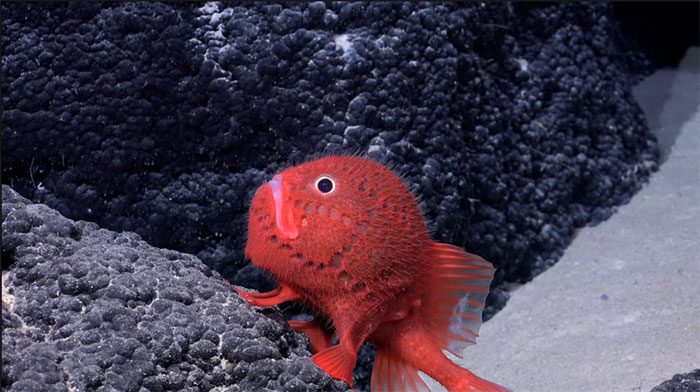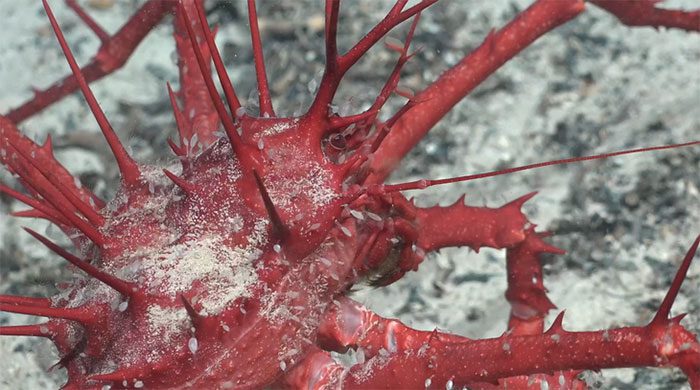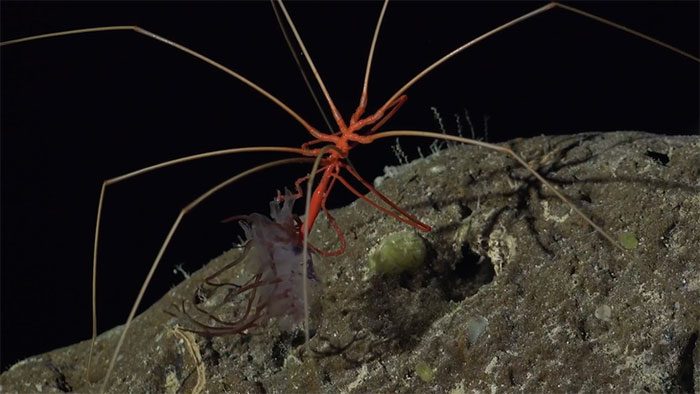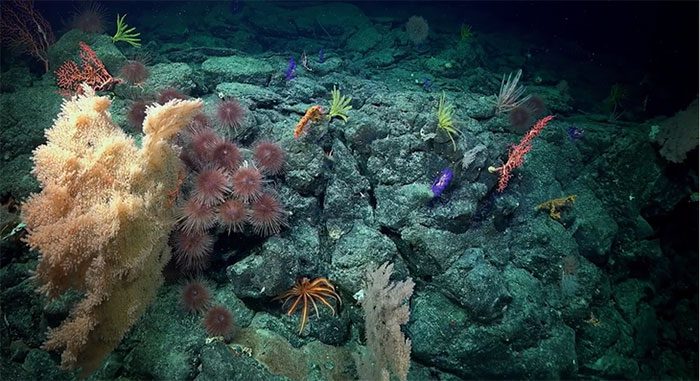Using the SuBastian underwater robot as a mini-submarine, an international research team has discovered over 100 marine creatures, likely new species, at a depth of 4,200 meters off the coast of Chile.

One of the newly discovered fish species – (Image sourced from video).
Scientists deployed the SuBastian underwater robot at the Salas y Gómez Ridge and the Juan Fernandez and Nazca-Desventuradas marine reserves from January 8 to February 11 to collect specimens.
These areas are characterized by significant geological activity, filled with hydrothermal vents (cracks in the surface that produce hot water) which help sustain diverse forms of life.
As a result, they found countless strange animal species there, such as an ancient coral forest, clusters of sea urchins with spiny structures resembling cacti, and hundreds of colorful fish, lobsters, and amphibians…

One of the new spider crab species – (Image sourced from video).
Mr. Javier Sellanes, the head of the research team, stated: “Previously, only two new species had been discovered in this area, and now we have found around 40 new species.”
“We have exceeded our own expectations during this expedition,” Mr. Sellanes added, affirming that the number of new species is “truly astonishing.”
Experts are analyzing the remaining specimens brought back by the SuBastian robot to determine whether they represent new species.

Another creature resembling a spider – (Image sourced from video).
In addition to exploring the native ecosystem, scientists have also mapped the seabed in a 52,777 square kilometer area and discovered four additional underwater volcanoes.
This project is part of the Nekton ocean investigation program, conducted in collaboration with the Nippon Foundation and the Schmidt Ocean Institute. They aim to discover 100,000 new marine species over the next decade.
The second expedition using the Falkor submarine, also part of this project, departed on February 24.
The non-profit organization SOI based in California will join the race to explore the ocean in 2025. They operate primarily in the southeastern Pacific, mainly offshore of Peru and Chile.

One of the ancient coral populations – (Image sourced from video).
The newly discovered species not only provide additional insights for the scientific community but also demonstrate the effectiveness of biodiversity protection measures implemented by the Chilean government.
Many countries worldwide have committed to establishing marine reserves under a United Nations treaty in 2023 to combat the overexploitation and depletion of marine life.


















































